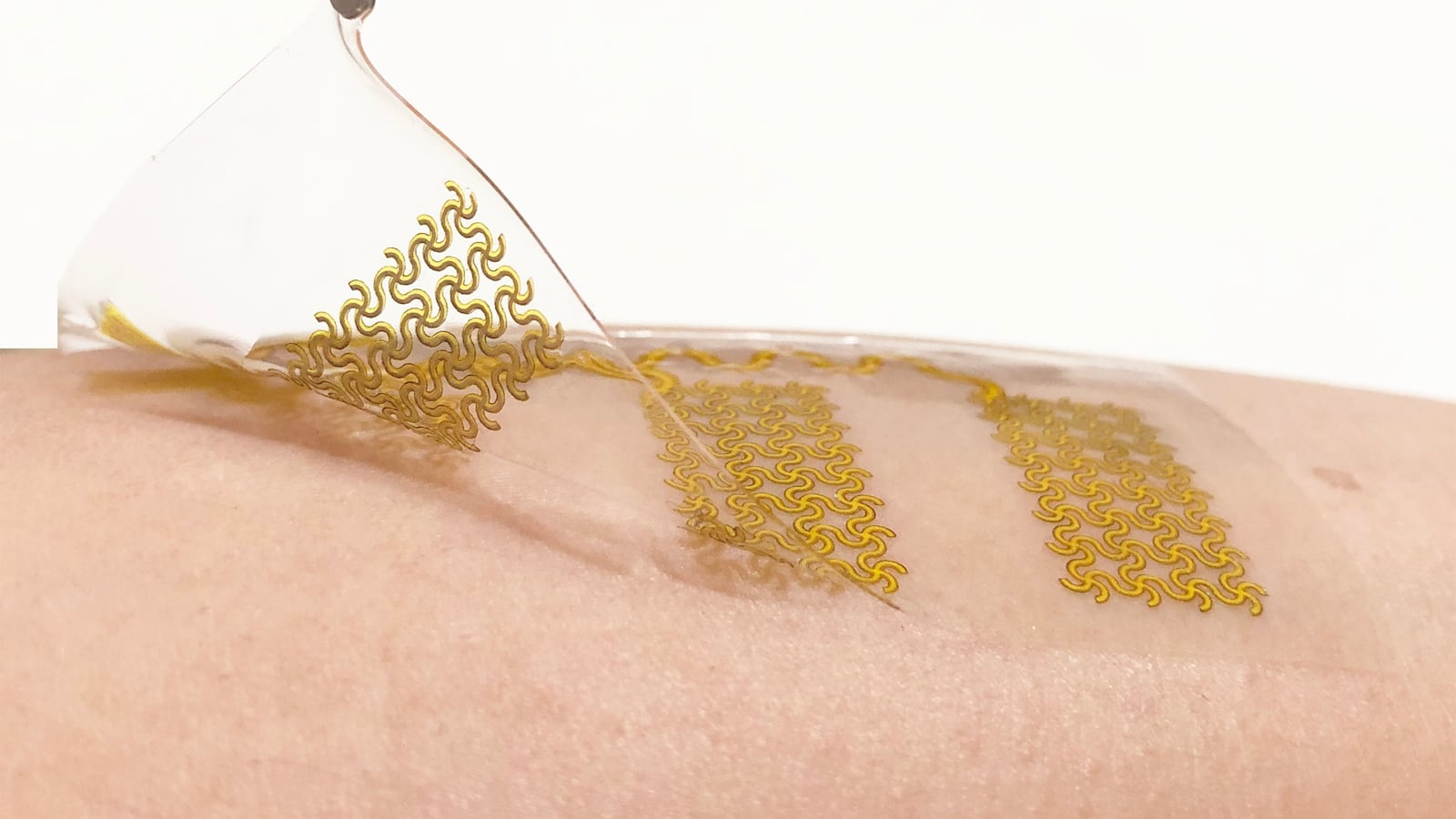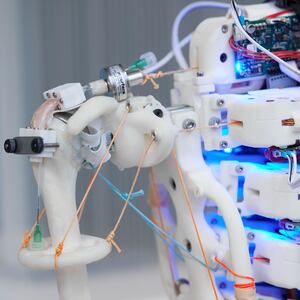Our future robotic overlords may be closer to acquiring a human-like sense of touch, but they’re also closer to moving beyond that—and attaining a superhuman ability to sense and interact with their environment.
Researchers at Caltech have created an electronic skin that can pick up pressure and temperature but also sense chemicals like TNT and viruses like COVID. In a paper published Wednesday in the journal Science Robotics, the flexible synthetic skin is imbued with an array of chemical sensors that each sense a unique stimuli. This versatile and supersensitive skin could be the future of intelligent robotic systems that can detect hazardous chemical leaks or ecological dangers before humans catch notice. It may even help us prevent future viral outbreaks that could otherwise lead to a COVID-level pandemic.
“Robotic physicochemical sensing has broad applications in agriculture, security, environmental protection, and public health, especially when operating in extreme and hazardous environments,” Wei Gao, a chemical engineer at Caltech and the study’s lead researcher, told The Daily Beast in an email.
While scientists have created robotic sensing technologies that can monitor physical stimuli like pressure and temperature, Gao said integrating chemical sensors onto a robot has been a bit more tricky, extremely challenging, and frankly, underdeveloped.
However, the electronic skin the Caltech researchers created gets around that hurdle by using custom-developed nanomaterials that can do a wide-range of sensing. Individual sensors embedded in the super-flexible skin are printed by an inkjet printer with nanomaterials such as silver, graphene, and carbon nanotubes contained in the ink.
“We chose a specific materials-based ink to achieve the best sensing performance for a unique stimuli,” said Gao. “For example, we print silver nanowires for pressure sensing, graphene for explosive sensing, and antibody modified carbon nanotubes for SARS-CoV-2 detection.”
Gao and his team proved the electronic skin could effectively sniff out chemicals like explosive TNT and the nerve agent Paraoxon (a powerful insecticide that’s been studied as a potential chemical weapon). They also slapped a patch of the skin beneath a small boat, dubbed M-Boat, and used it to locate the source of a water-based chemical leakage.

The M-bot system, in which a person wearing a patch of the electronic skin is able to use their muscle movements to control a corresponding robotic hand.
Wei Gao / CaltechMore relevant to our current pandemic: The electronic skin can detect coronavirus. Gao said the carbon nanotubes used for sensing have antibodies studded all over them that are specific to viral proteins like the infamous spike protein. This sort of detection could prove very useful for monitoring potential outbreaks through wastewater or sewage (something health authorities around the world have been pursuing since the early days of the pandemic).
Aside from COVID monitoring, Gao said this technology could also be used to track ecological pollution, chemical threats during warfare, or the presence of hazard materials in our environment like certain pesticides. It could be even used to taste food during the cooking or manufacturing process.
And robot enthusiasts have other reasons to rejoice: Gao and his team developed a human-robot interface called M-bot that lets users wear a patch of electronic skin to remote control a robot hand through their own muscle movements.
Sadly, you won’t be able to buy M-Bot any time soon. But its electronic skin does bring us closer to superintelligent robots that can protect us from harm. (Hopefully they don’t get any megalomaniacal ideas along the way.)







